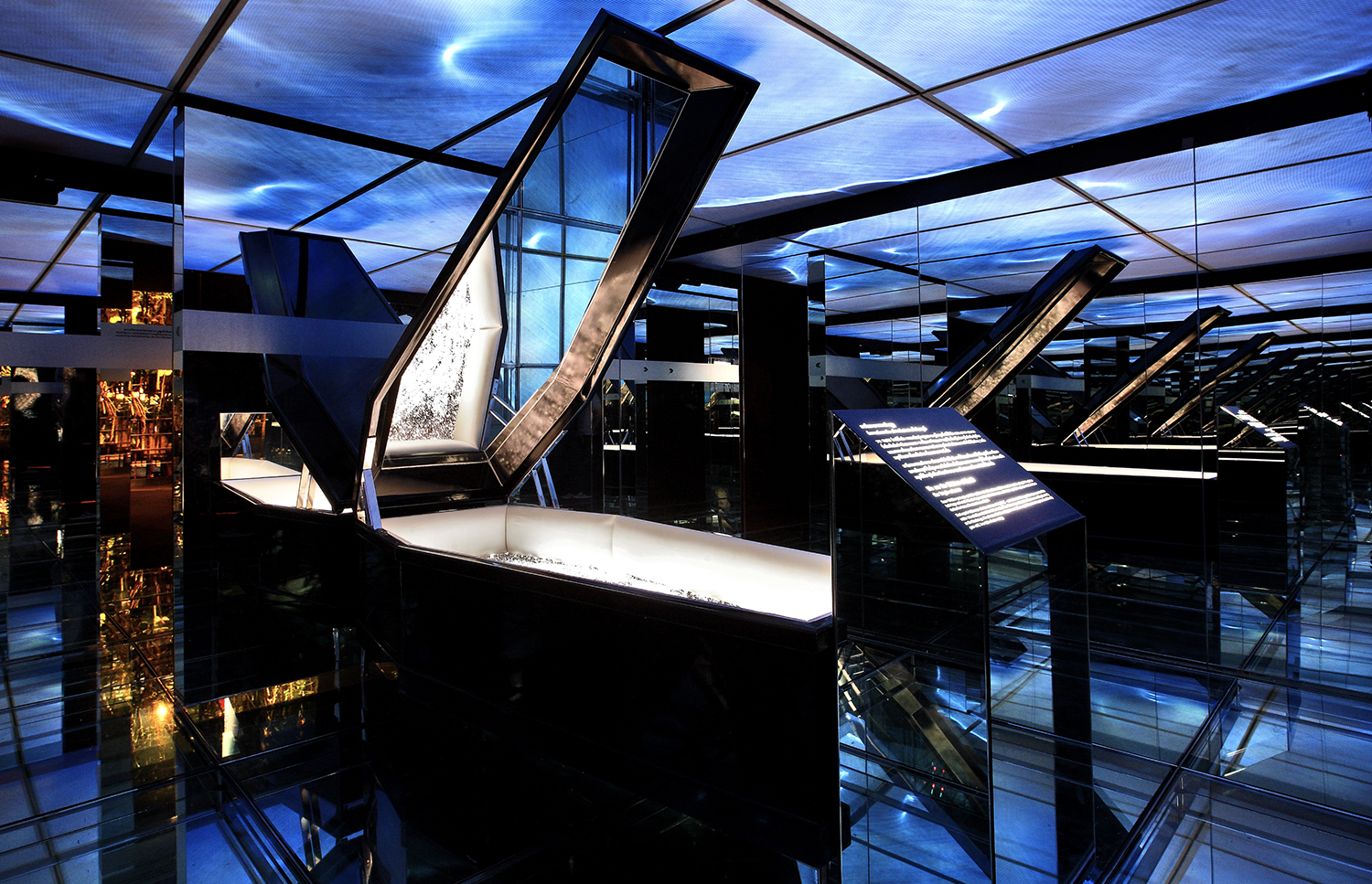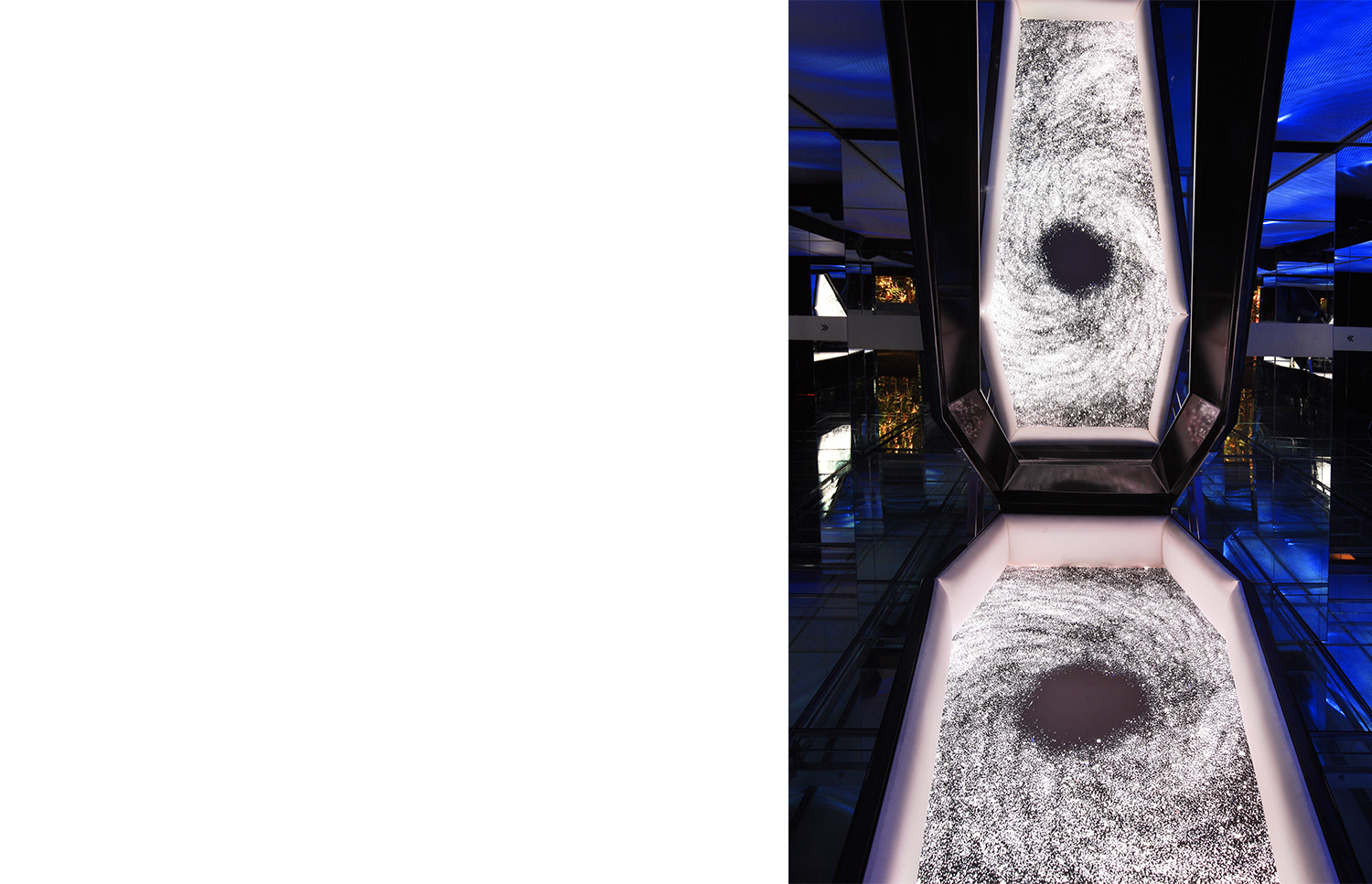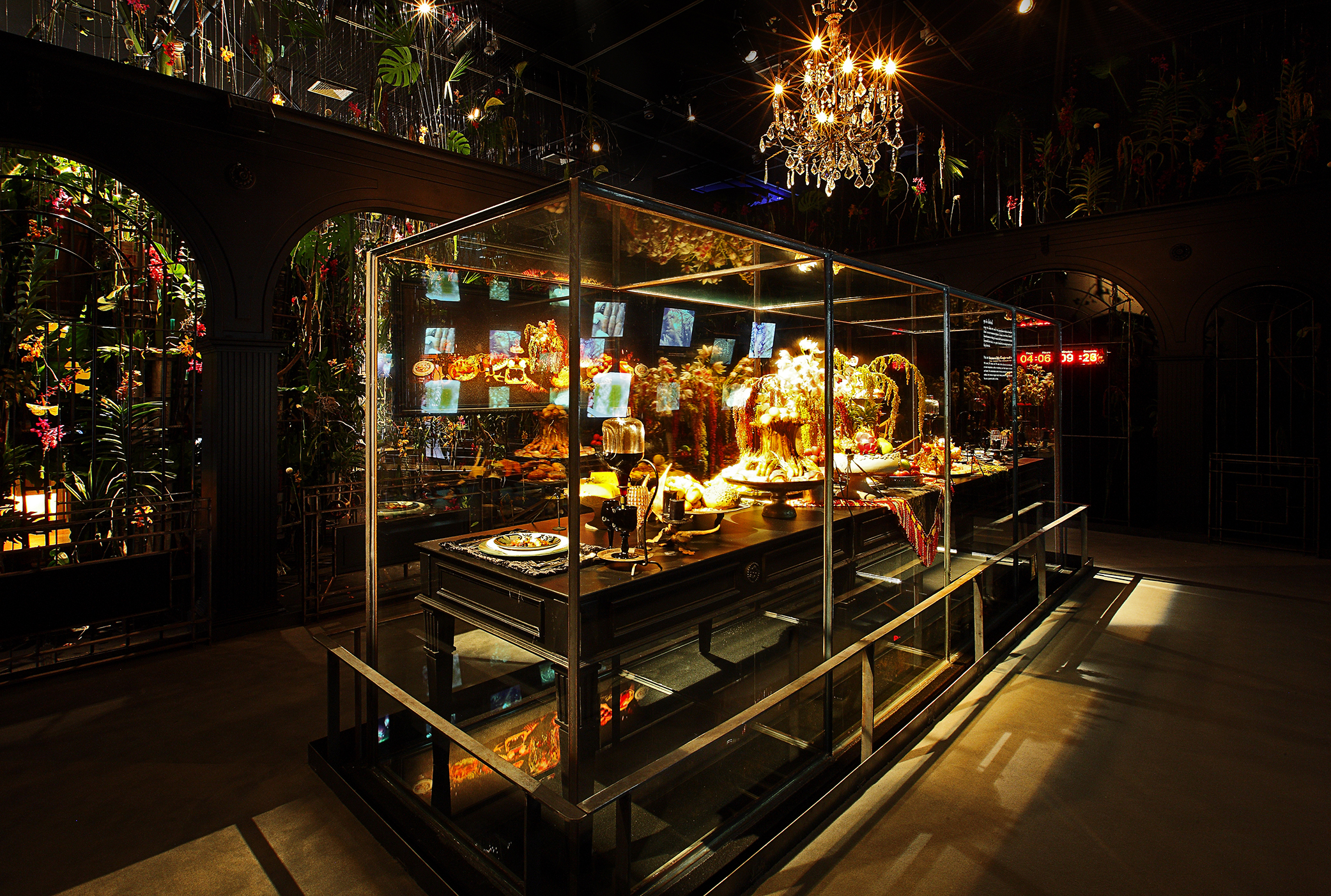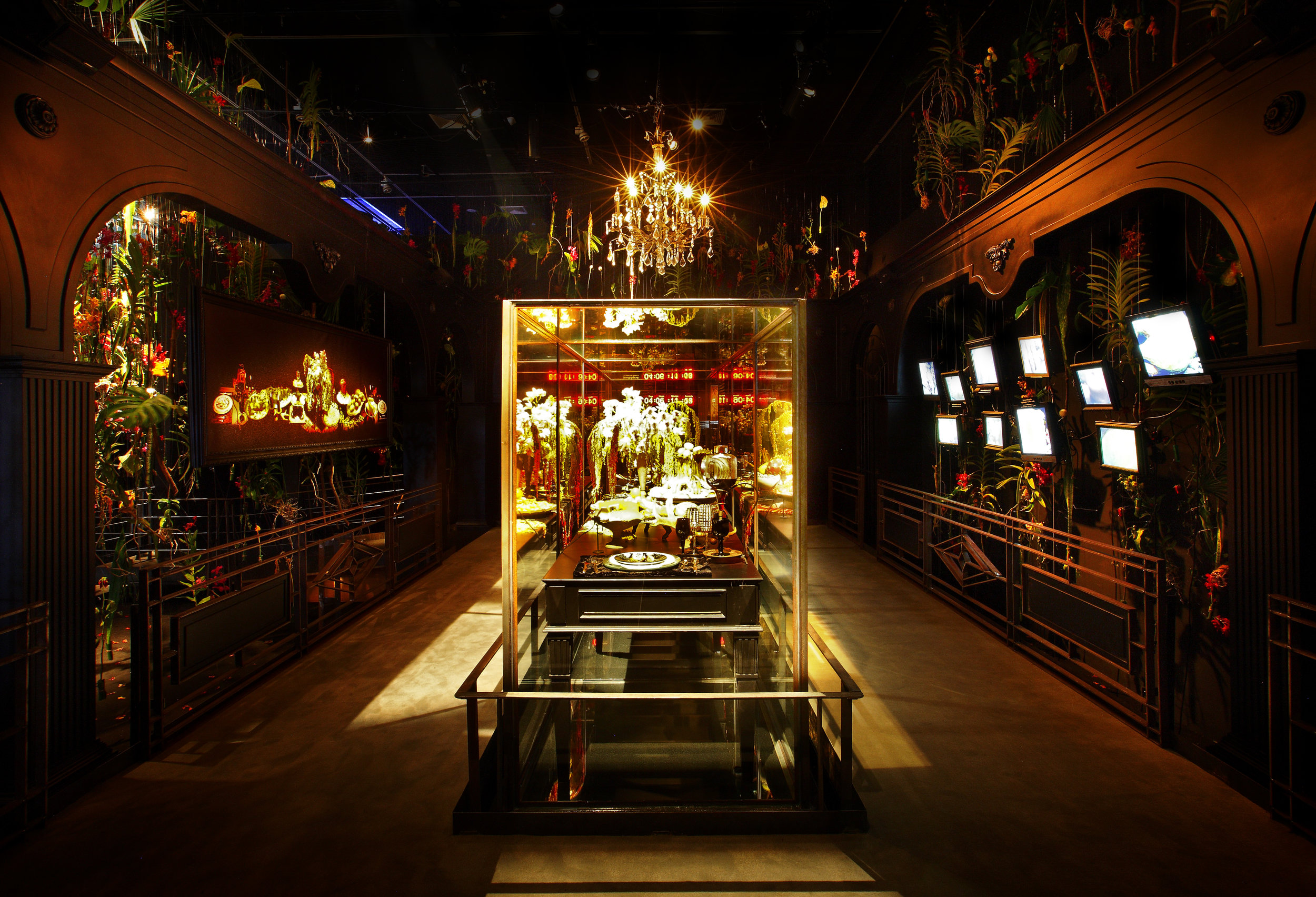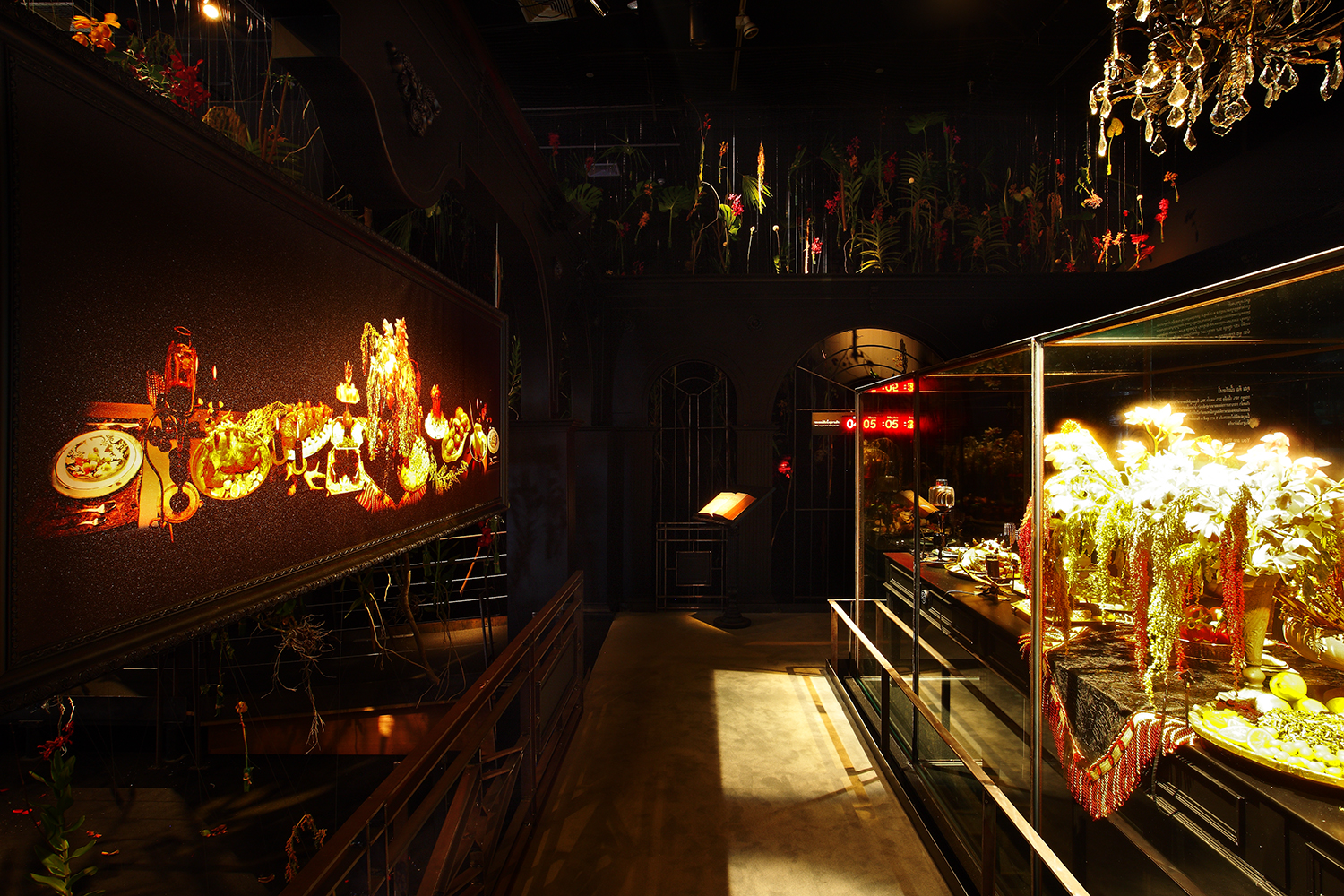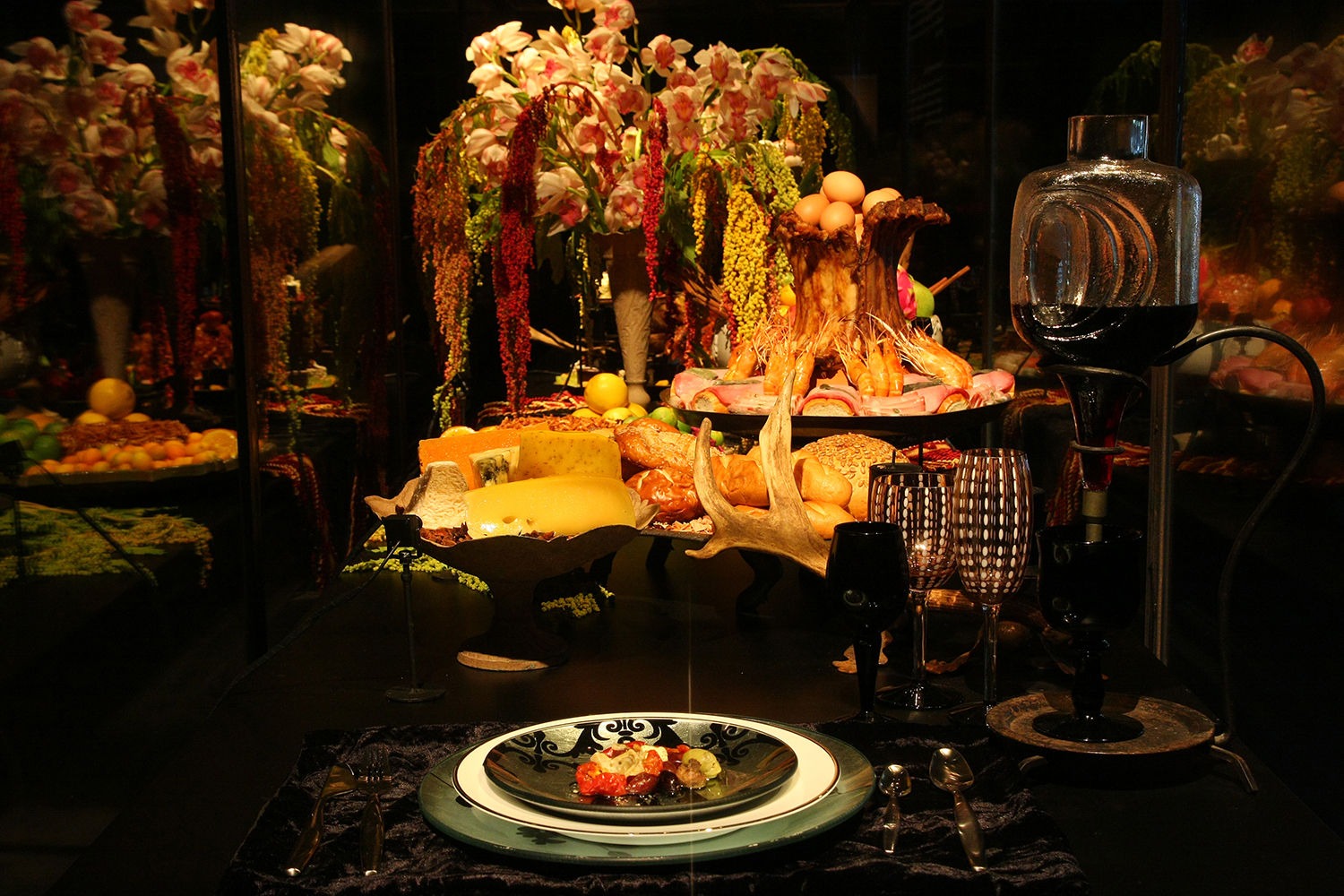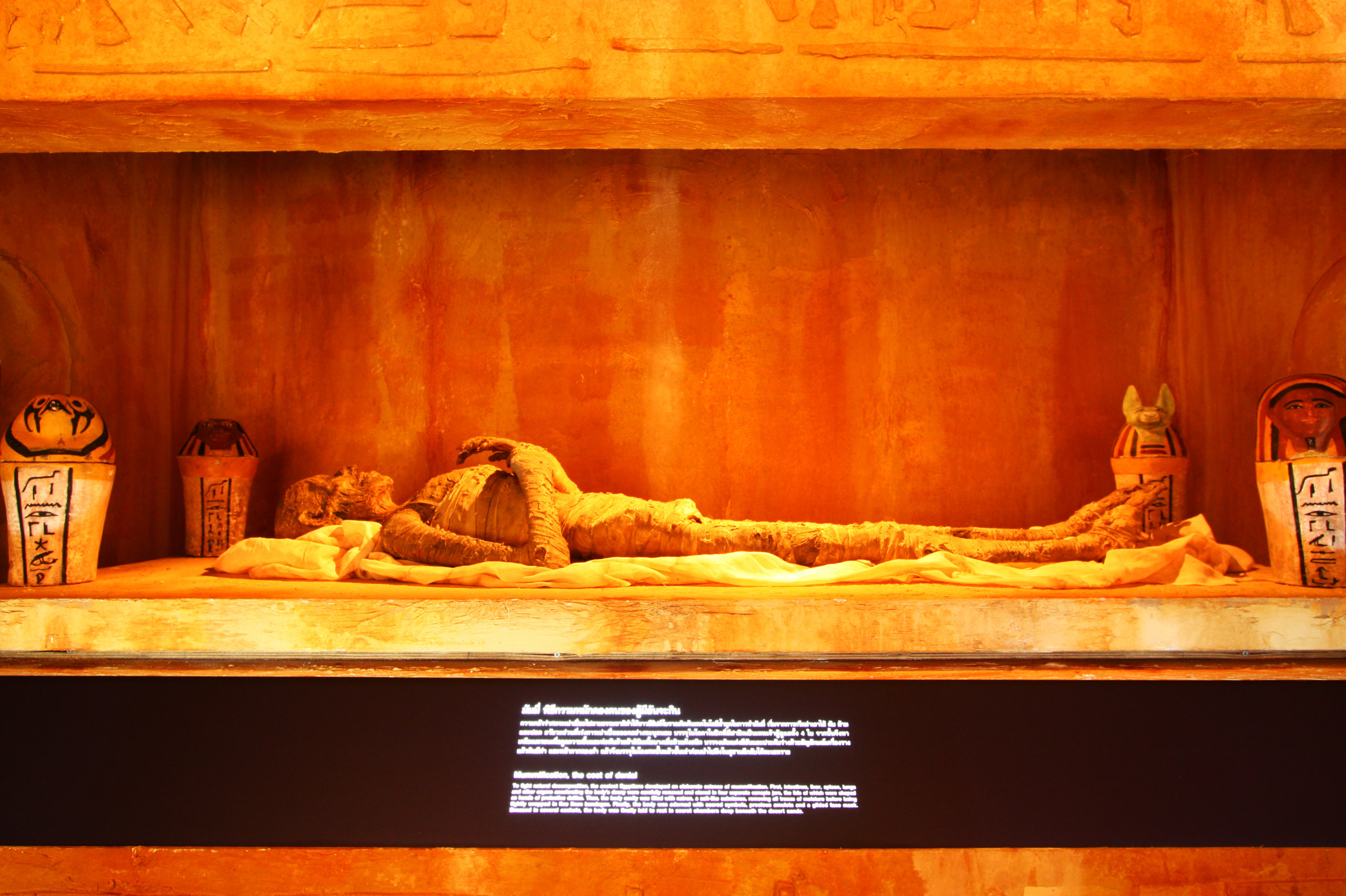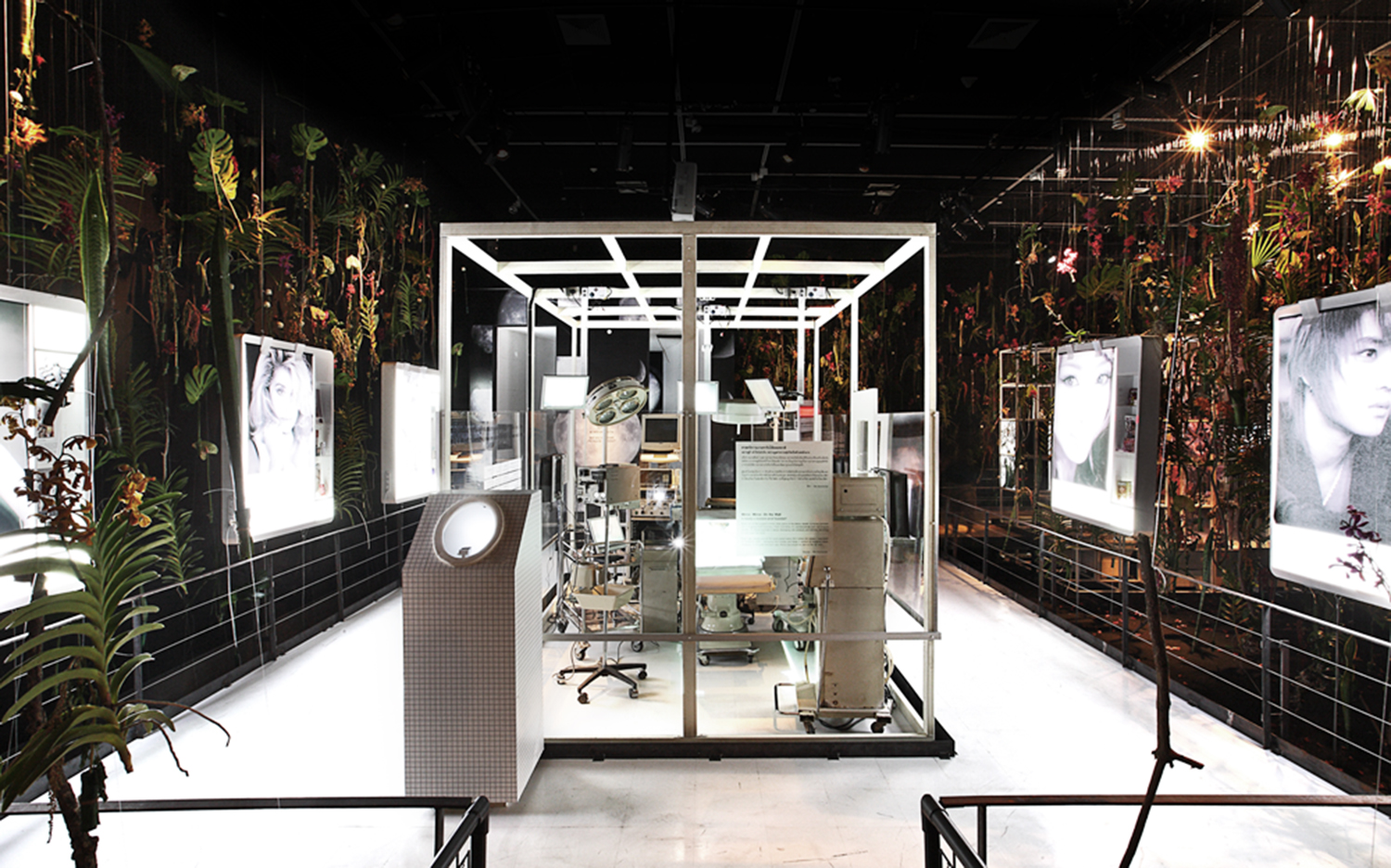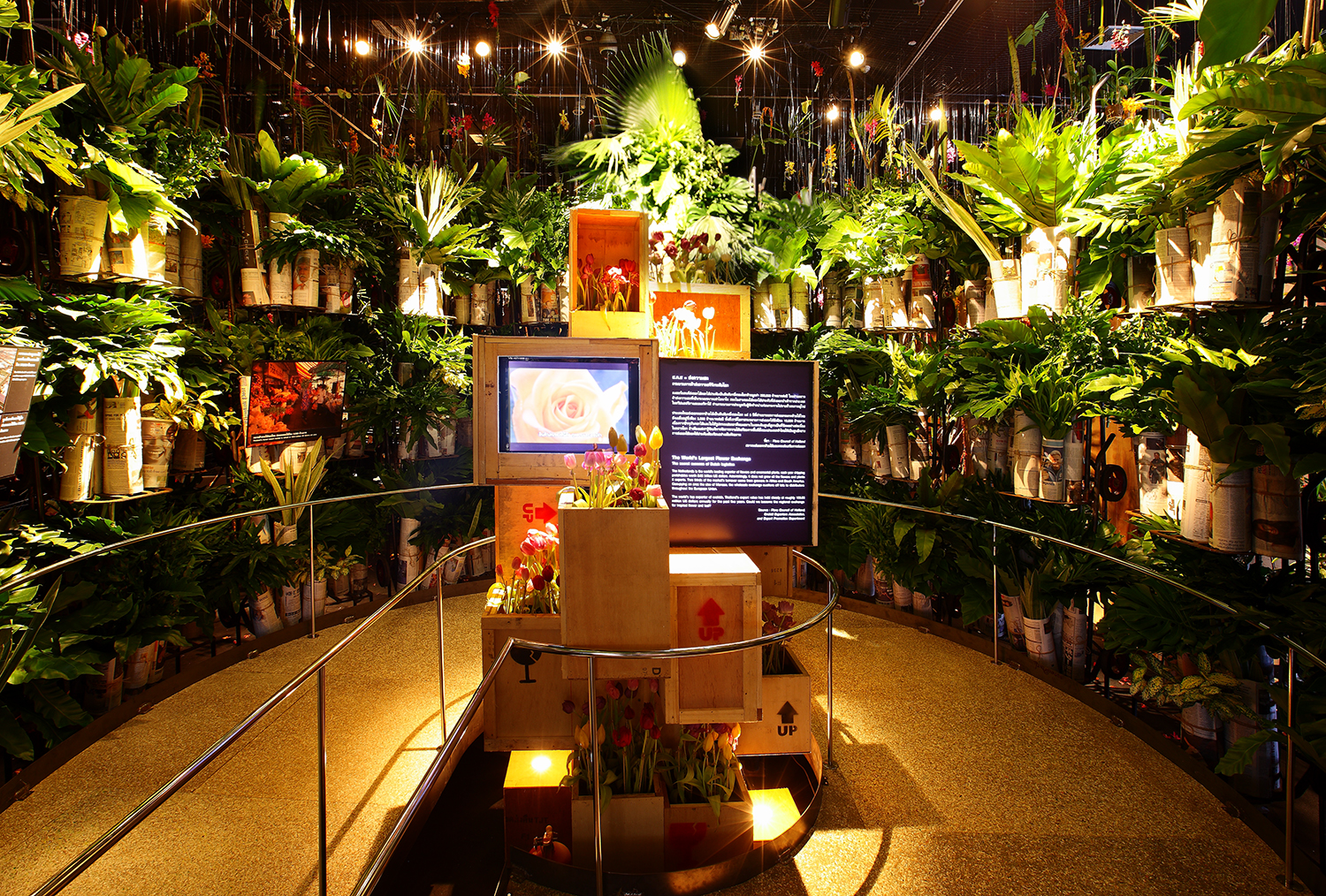Perishable Beauty /
TCDC Bangkok
Profit from impermanence
Perishable Beauty
The exhibition that will die… before your very eyes
Anti-aging creams, cosmetic surgery, Botox injection, fitness centers, or even state-of-the-art stem cell technology – all are businesses that thrive on our struggle to conquer impermanence. Many of us are willing to spend without limit just to stay eternally young and attractive, which makes impermanence a business motif that creates unending propulsion to our economy with sizable, year-round turnover. Statistics reveal that at least 11 trillion baht is spent globally each year on beauty nourishment and efforts to overcome the flux of our bodily appearance – a value that matches Thailand’s gross domestic product.
Money is a needed resource not only for the fight against natural decay of human body. In addition to our ingenuity and management skills, budget is also a vital part in the maintenance and preservation of the surroundings in order to keep our country beautiful and memorable to visitors from around the world. The benefits of investment in environmental conservation are, therefore, not restricted to the good impression created on visitors, but also revenues to be generated to property owners who have the finesse to turn beauty of creations within and surrounding their premises into lucrative business.
In addition, the nature of time is also a business opportunity anyone can tap into, turning needs that surround the restriction of time into everlasting wealth reserves as long as nature allows us to make our livelihood on impermanence.
Even amid the large-looming global recession, the huge turnover of industries that center around “rot” and “decay” and the added values created on “deterioration” keep growing. They should, however, be regarded as the “last drop of lemon juice”. Otherwise, this invigorating last drop will definitely end up wasted and perished when the nearly-fully squeezed lemon skin goes to a dump ground somewhere out there, as are worldly things that deteriorate by the natural rule of impermanency.
Exhibition Details
The exhibition offers a multifaceted look into deterioration of things, coupled with myriads of ideas to create business opportunities out of impermanency.
Perishable Beauty Exhibition is divided into 8 sections:
1. Anicca – This section illustrates the nature of decay and ending of things, which apply to all without exception, even the universe. The lifetime of human beings is a blink of an eye, compared to the life span of the universe, and thus we are indefinitely perishable. Anicca is presented through the story of starlight – the light of the past which travels from stars that have perished billions of light years ago. Also highlighted is the meaning of black holes – the beginning and end of all cosmic life.
2. Death – The audience will be daunted over the death of human beings. They will be shown in form of how we human folk struggle to fill our life with happiness and pleasure while we are still alive, such as by indulging ourselves in dining. Displayed through a wide array of food, Death displays rot and decay evident even in the food that we consume.
3. Fear – People of all eras are afraid of death and take every effort to stay beyond the reach of deterioration. The history and evolution of the struggle to avoid death are told in generations, ranging from mummification, cloning, to the making of bone-ash ornaments, etc.
4. Beauty – This part of the exhibition reflects people’s delight of keeping themselves in pleasing appearance for as long as possible. The values have opened up the door to global opportunities in business, such as in cosmetics, skincare products, fitness centers, cosmetic surgery, as well as numerous efforts through the media to define beauty in ways that serve certain businesses. The section ends by raising a question of what really is “genuine beauty” – the quality that has never find a permanent description. In fact, the ever-changing definition of beauty is dependent on social conditions and criteria that also keep changing in different eras.
5. Season – This section shows how the short period of each season creates economic value to natural creations, only if we perceive this and take it as a business opportunity. For instance, the Japanese government has turned its ‘sakura’ cherry blossom period into a tourist season that generates an enormous inflow of foreign currency into the country.
6. Environment – Showing that scenic beauty of nature and surroundings is a result of visionary investment and sensible administration, Environment suggests that environmentally sound management of picturesque destinations can create lasting impression on their visitors and generate sizable income to the communities, as seen in the Amphawa District of Thailand, Lijiang old town in China, and Venice City in Italy.
7. Freshness Management – The section gives an idea of how we can deal with natural decay of things and work out a process that supports relevant business. Freshness Management is presented through the flower industry of the Dutch, who manage to send flowers from their farms to overseas customers with optimized time-efficiency. It also explores the business flair of the Dutch for importing flowers from around the globe to make the Netherlands the international center and world’s leading market for flowers. This part of exhibition will hopefully inspire development of similar freshness management procedures to make Thailand a regional center and the world’s leading exporter of tropical flowers and leaves, these on top of added value from the touch of creativity given to our exported flowers.
8. Last Drop – Symbolizing the business opportunity that Thai people should maximize benefits upon, and in the soonest manner, Last Drop gives a conceptual idea that urges the audience to digest the knowledge and insight obtained from this exhibition, in order to spawn new and exciting business ideas to fulfill the objectives of the Perishable Beauty Exhibition.

